The Euphrates, along with its sister river, the Tigris, is one of the most historically important rivers in the world. The Bible mentions it as one of the rivers that flowed through the Garden of Eden, the legendary birthplace of humanity. Along with the Nile, the Indus, and the Yellow River, the Euphrates was one of the early cradles of civilization. It helped a succession of Mesopotamian Empires flourish, such as the Sumerians, the Hittites, and the Babylonians. It was a vital trade route across the Middle East. And its proclivity to unexpected and violent flooding influenced the mythology of local cultures. Today, the Euphrates continues to be of vital importance to Turkey, Syria, and Iraq – the three countries home to the river. But in light of climate change and burgeoning populations, will there be enough water to keep this mighty river from drying to a trickle?
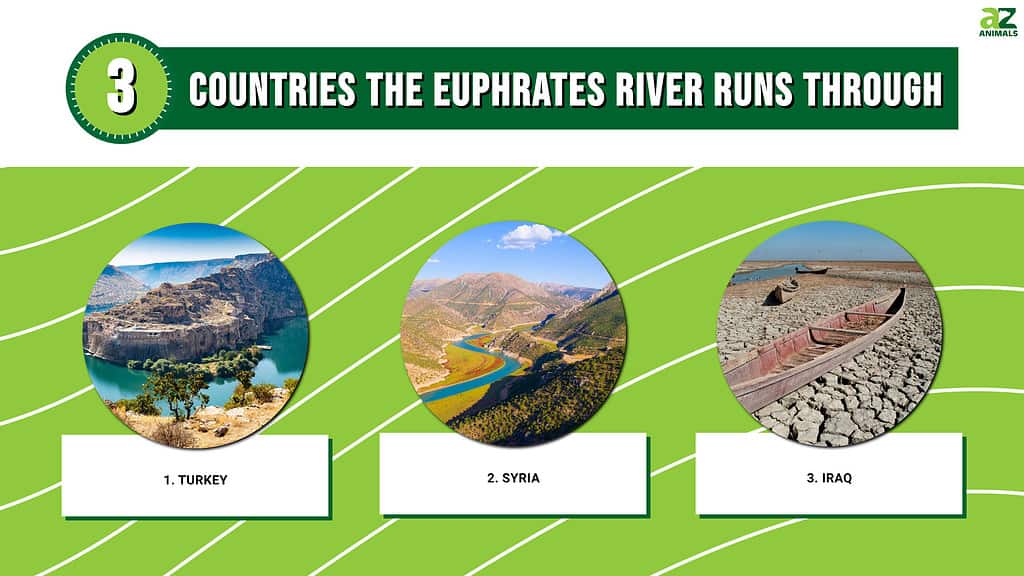
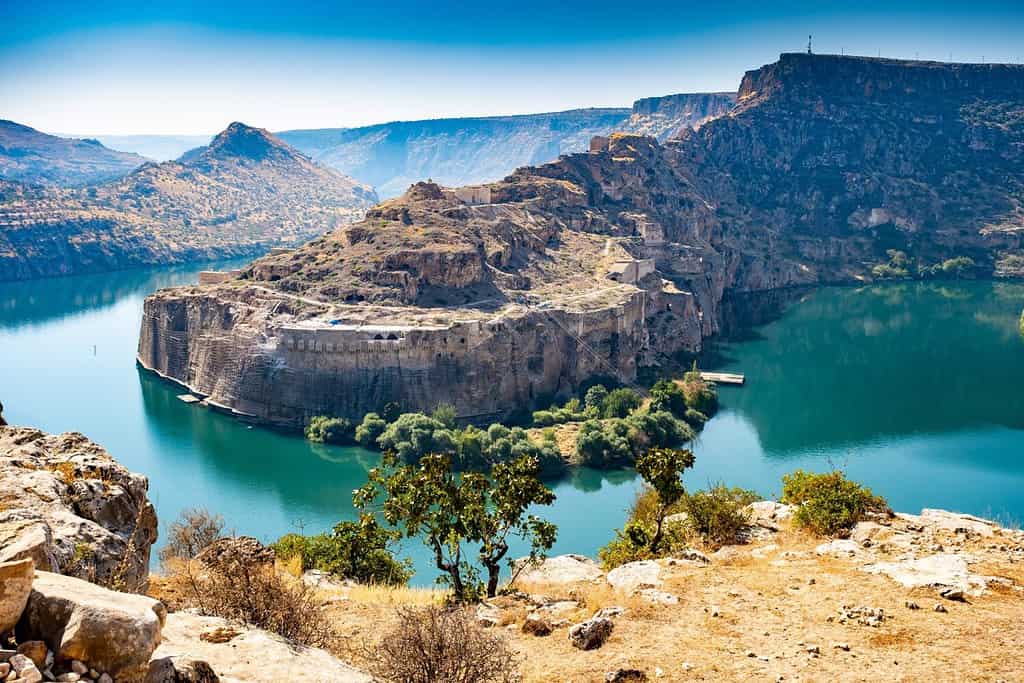
The Euphrates River is one of the earliest cradles of human civilization.
©yunus_oz/Shutterstock.com
The Euphrates in Turkey
Geography
The Euphrates River is 1,740 miles (2,800 km) long. It begins in Turkey and flows southeast over Syria and down the length of Iraq to the Persian Gulf. 90% of the river’s water originates in Turkey. It starts with a confluence of two rivers: the Karasu and Murat, which are located in the Armenian Highland. It is additionally fed by several tributaries such as the Tohma, Peri, Calti, and Munzur Rivers. The Euphrates exits Turkey by descending between the Taurus Mountains to the Syrian plateau. In all, 603 miles (971 km) of the river is located within the borders of Turkey. The quantity of water in the river is especially high during the winter rainy season and the snowmelt in the mountains in the spring. In the dry season between July and January, the flow is greatly reduced.
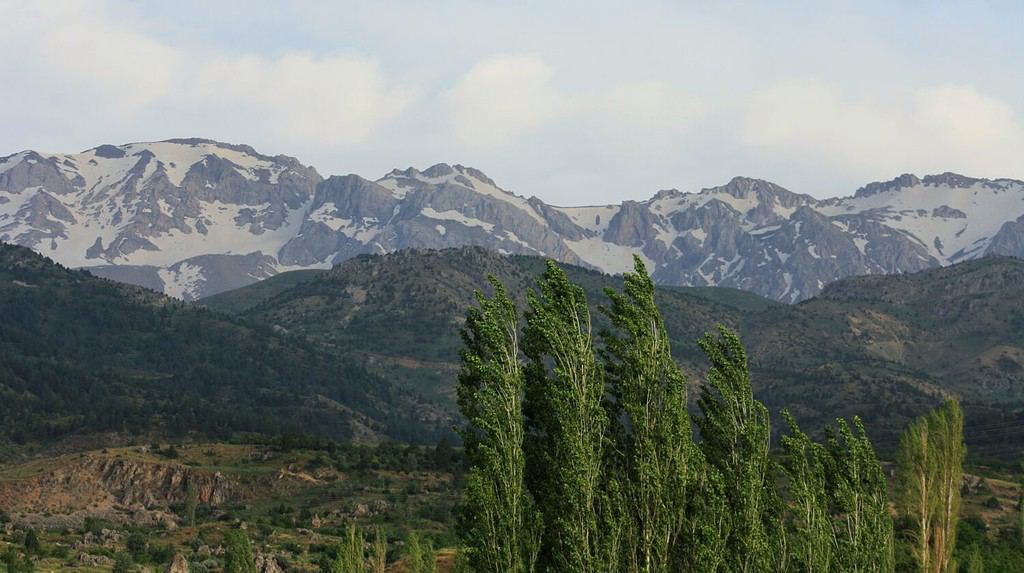
Snowfall melts in Turkey’s Taurus Mountains in the spring, causing the Euphrates River to overflow.
©BELLANORE/Shutterstock.com
Economic Development
Since the 1960s, the government of Turkey has been damming the Euphrates to generate hydroelectric power, create reservoirs for irrigation during dry seasons, and control flooding. Keban, Karakaya, Birecik, and Karkamis are all dams Turkey has built at various points of the river. The largest dam though, and one of the largest in the world, is the Ataturk Dam which was completed in 1992. It is 554 feet (169 meters) tall. These hydroelectric projects have helped bring development to Southern Turkey, but they have raised international tensions by precipitously reducing the availability of water in the much drier downstream countries.

The Ataturk Dam is the largest in Turkey and one of the largest in the world.
©mehmetkrc/Shutterstock.com
The Euphrates in Syria
Geography
The Euphrates flows through Eastern Syria, where the climate is a hot, dry desert with average temperatures of 64.4°F or 18°C but increasing to over 86 °F (30°C) in summer. Syria is experiencing firsthand the effects of climate change, as temperatures have risen by one degree Celsius compared to a century ago and rainfall has decreased by 18 millimeters per month per century. People in this region of Syria are dependent on the Euphrates not only as a source of drinking water, but for fish, water for livestock, irrigation of crops, useful riverbank plants and trees, and for easier transportation through the rugged and forbidding terrain. A full 85% of Syria’s agricultural production is dependent upon the Euphrates.
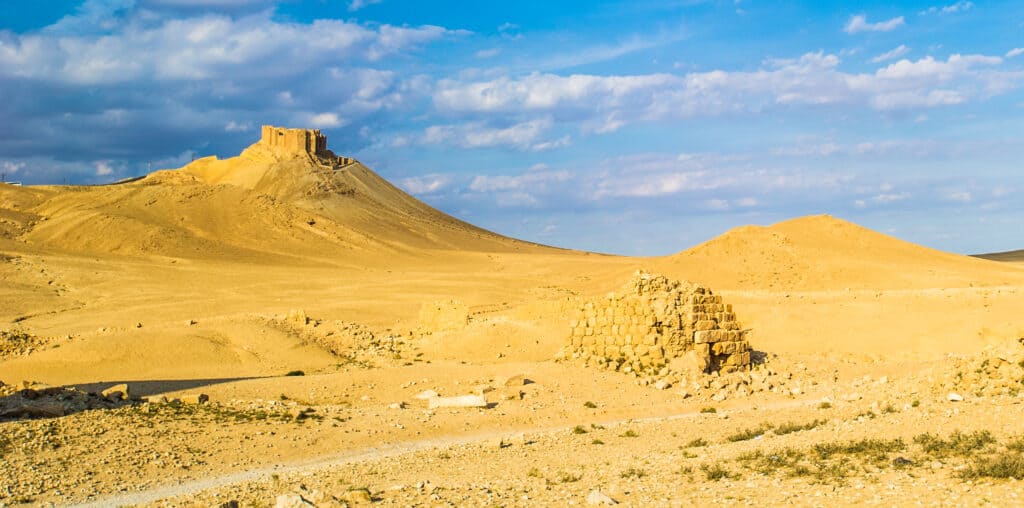
The Syrian Desert cannot support large human populations without water for people, livestock, and crops from the Euphrates.
©Anton_Ivanov/Shutterstock.com
The Syrian Water Crisis
This water crisis is a humanitarian and ecological catastrophe brought on by a perfect storm of negative events: Turkey’s aggressive damming of the river, the violent Syrian civil war that has displaced millions of people, and drought and famine in the region. As a result of these factors, Syria’s wheat harvest has dropped 75% since 2011. The supply of drinking water has been reduced by 40% and large numbers of people are drinking contaminated, unfiltered water. Affected regions are experiencing periodic cholera outbreaks. This disease is rare in the developed world and can be avoided with vaccinations and treated with hydration, but in areas where water is depleted, vaccines are in short supply, and infrastructure has been irreparably damaged, it is making a tragic comeback.
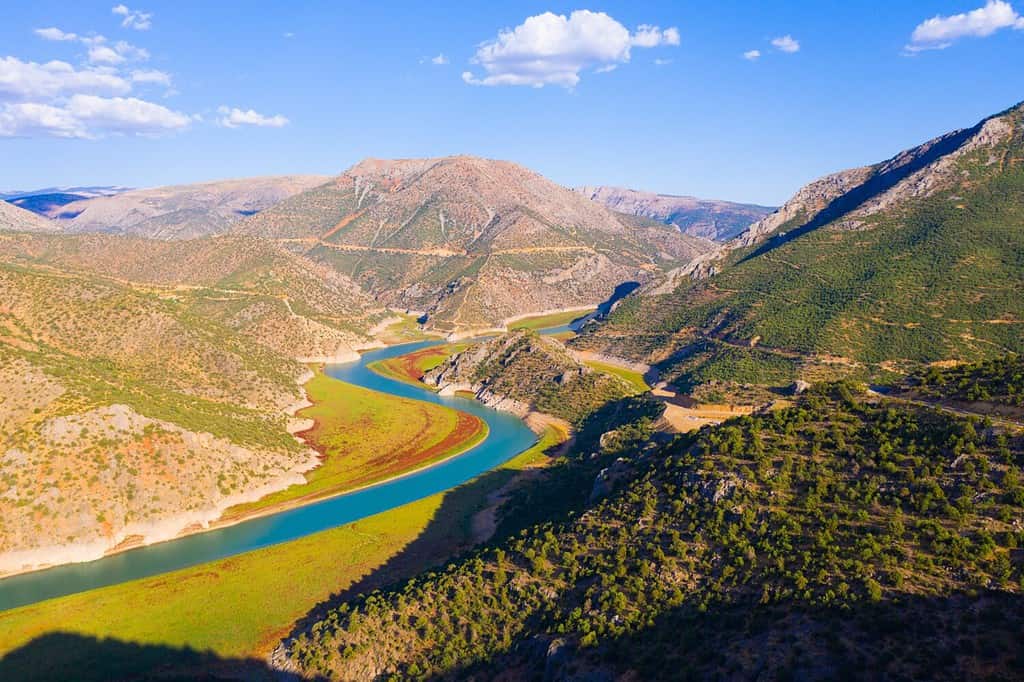
Millions of people are drinking contaminated water and contracting preventable diseases like cholera.
©bodrumsurf/Shutterstock.com
The Euphrates in Iraq
A Basis of Agriculture and Power
The Euphrates River is truly the lifeblood of Iraq. Without it, virtually the entire country would be an arid desert. But the presence of the Euphrates made Iraq the heart of the “Fertile Crescent.” This is an arc of fertile, well-watered land stretching from the Persian Gulf through Iraq, Southern Turkey, and Syria. The Euphrates joins with the Tigris River at a place called Shatt al-Arab. From there the combined river flows into the Persian Gulf. The presence of the two rivers through much of the region earned ancient Iraq the name “Mesopotamia” – land between the rivers. Since antiquity, farmers have intensively irrigated and farmed this land. The resulting agricultural surplus created a basis for the wealth and power of great kingdoms. Iraq is rich in archaeological sites near the rivers from a succession of ancient civilizations.

Iraq is rich in archaeology, like this copy of the Epic of Gilgamesh, which describes a mighty flood.
©Osama Shukir Muhammed Amin FRCP(Osama Shukir Muhammed Amin FRCP(Glasg), CC BY-SA 4.0, via Wikimedia Commons)/Wikimedia Commons – License
Will the Euphrates Dry Up?
The Iraqi Ministry of Water Resources has warned that the river could dry up completely by 2040. How is this possible? The reasons have to do with the complex interplay of the environment, infrastructure, and politics.
Environment and Infrastructure
Iraq has suffered greatly as global warming has accelerated, experiencing hotter conditions and low rainfall levels. There are also infrastructure issues. The two Gulf wars and the ensuing civil war in Iraq damaged critical infrastructure, including water treatment plants and irrigation pumping stations and equipment. The technology of Iraq’s irrigation infrastructure and methods are not always efficient and waste a lot of water.

Reduced flow through the Iraqi segment of the Euphrates River can create life-threatening situations.
©Evgeny Haritonov/Shutterstock.com
Political Interference
Another reason the Euphrates may dry up in Iraq is that the countries in the region are rivals. Water can and has been weaponized in their struggle for regional influence. About 90% of the river’s water originates in Turkey. As a result, that country feels it has the right to dam up the river and use the water that falls in their country for their own purposes. Negotiating water-sharing agreements has been difficult because of these countries’ rivalries. During the Cold War, Turkey was allied with the United States, and Syria and Iraq were aligned with the Soviet Union. As political rivals, they felt no obligation to help one another. During the Persian Gulf Wars of the 1990s, Turkey cut off the flow of water to Iraq to assist American war efforts. Relations between the countries are further inflamed by the fact that all three have restive Kurdish minorities. The Kurds are the largest ethnic minority in the world that don’t have their own country. Turkey is constantly battling their independence struggle. As a result, Turkey has intervened militarily in neighboring countries to punish Kurdish rebels operating in the border region.
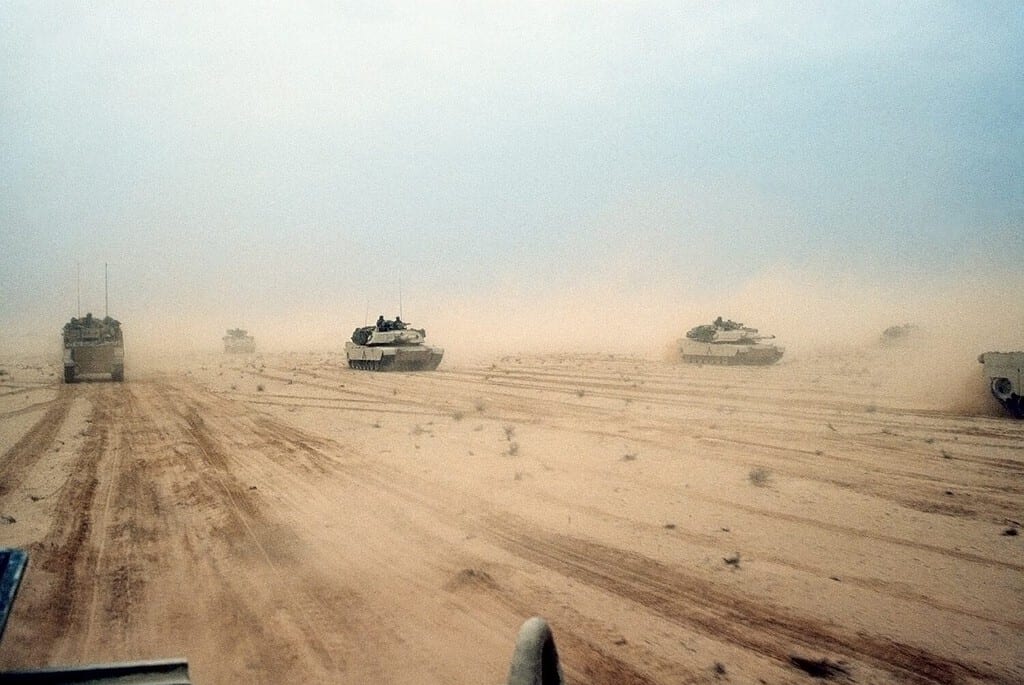
As a NATO ally of the United States, Turkey supported the American war effort in Iraq by cutting off the water of the Euphrates.
©Everett Collection/Shutterstock.com
What Happens if the Euphrates Dries Up?
If the Euphrates dries up, at least in Iraq, what will happen next? In this nightmare scenario, agriculture, livestock, and industries dependent on water would wither and die. Millions of people would lose their livelihoods and would not have access to plentiful clean water for drinking and washing. This could lead to mass disease outbreaks, civil unrest, and the migration of millions of refugees into neighboring countries, including Turkey and Iran. War could conceivably result. Burdened with increasing numbers of refugees, Iran might ally with Iraq to destroy one or more of Turkey’s dams and release the flow of water. However, because Turkey is a NATO ally, this would obligate the United States and European NATO countries to defend Turkey and go to war with Iran and Iraq. So you can see, this problem is serious enough to wreak havoc not only in the affected countries themselves but in the world at large.
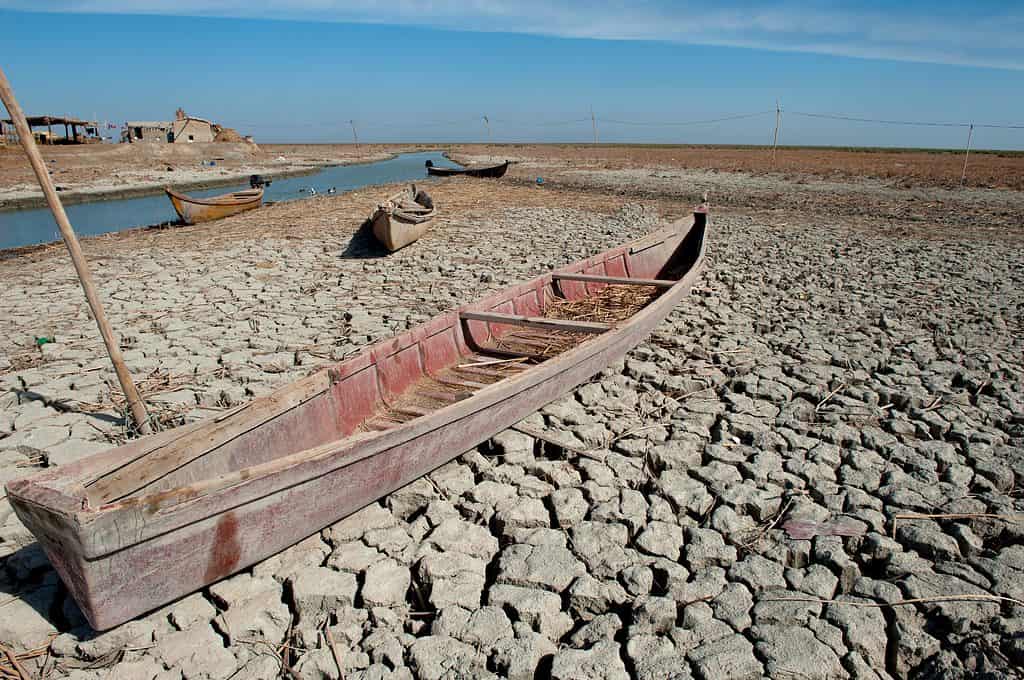
If the Euphrates dries up, some of the consequences could be the collapse of agriculture and industry.
©John Wreford/Shutterstock.com
Is it the End of the World?
The Christian Bible describes the drying up of the Euphrates as one of the signs of the end of the world. The relevant passage is Revelation 16:12, which says the water would dry up “to prepare the way for the kings from the east.” Some Christians consider this to be a prediction of a literal event that will precede the world-ending Battle of Armageddon, which they expect to take place in Israel. In their understanding, “kings from the east” is a reference to Asian powers such as India or China trying to get their armies and military equipment to Israel overland.
Not all Christians agree on such an interpretation, however. Some give it a more symbolic meaning. For example, it could reference the general struggle between good and evil in the world. Civilization collapses when there are no more obstacles to evil. Immoral behavior by human beings will signal the decline and fall of the current world system.

The Christian Bible mentions the drying up of the Euphrates as one of the signs of the apocalypse.
©robert_s/Shutterstock.com
The Bottom Line
With or without a supernatural source, the Euphrates is drying up for several known reasons: environmental, technical, and political. There is no doubt that the mismanagement of this natural resource is already beginning to affect people in the region. It’s a concerning issue that reminds us to use water resources wisely, no matter where we live in the world.
Summary of the 3 Countries the Euphrates River Runs Through
The Euphrates River is 1,740 miles (2,800 km) long. It begins in Turkey and flows southeast over Syria and down the length of Iraq to the Persian Gulf. The table below shows how many miles the river flows through each country.
| Country | Miles | |
|---|---|---|
| 1 | Turkey | 603 miles (971 km) |
| 2 | Syria | 440 miles (710 km) |
| 3 | Iraq | 660 miles (1,060 km) |
The photo featured at the top of this post is © Funtay/Shutterstock.com
Thank you for reading! Have some feedback for us? Contact the AZ Animals editorial team.







